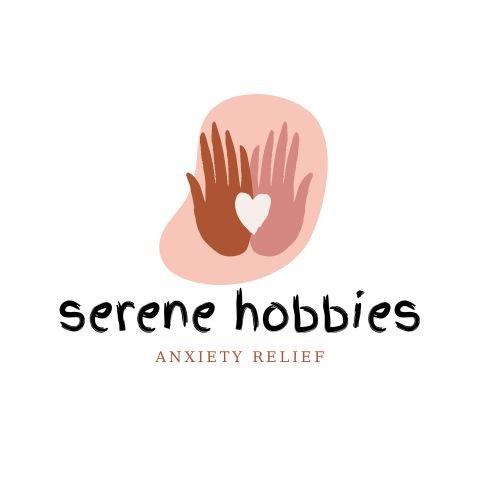When panic strikes, your voice can become a powerful ally for calming your nervous system. Start with gentle humming exercises, focusing on deep, steady breaths while making a soft "hmmmm" sound. This creates soothing vibrations throughout your chest and face, helping to regulate your breathing pattern. You can progress to singing familiar songs, using mantras like "om" or "ah," and practicing resonant breathing techniques. Keep your jaw relaxed and shoulders down while matching your breath to simple vocal patterns. These foundational techniques open the door to a complete toolkit for managing panic attacks effectively.
Understanding Breath and Voice Connection

During a panic attack, your breath and voice are intimately connected through the same physical systems. Your diaphragm, lungs, and vocal cords work together to produce both breathing and sound. When anxiety strikes, your breathing typically becomes shallow and rapid, directly affecting your voice's quality and stability.
Understanding this connection is essential for using voice exercises effectively. Your voice can't remain steady without proper breath support, and you'll notice your speech becoming shaky or strained when panic sets in. The muscles that control your vocal cords tighten during stress, making your voice sound higher-pitched or constricted.
You can observe this connection by placing one hand on your abdomen while speaking. Notice how your belly expands with each breath and how this movement changes when you're anxious. This awareness helps you recognize when your breathing patterns shift during panic attacks.
Deep Humming for Instant Calm
When you're in the grips of a panic attack, deep humming can provide immediate relief by creating calming vibrations that interrupt racing thoughts and restore focus.
You'll want to first take a slow breath through your nose, then release it gradually while producing a steady "hmmmm" sound that you can feel resonating in your chest.
The therapeutic vibrations of humming work as a natural form of sound therapy, helping to activate your body's relaxation response and bringing you back to a state of calm.
Vibrations Calm Racing Thoughts
Deep humming creates powerful vibrations in your chest and throat that naturally slow racing thoughts during panic attacks. These vibrations stimulate your vagus nerve, triggering your body's relaxation response and helping to break the cycle of anxious thinking.
When you hum, you'll feel the vibrations resonating through your facial bones, chest cavity, and skull, creating a natural massage-like effect that helps release tension.
To maximize the calming effects, try this focused humming technique: Close your eyes and place one hand on your chest. Take a deep breath and start humming on the exhale, maintaining a steady tone that feels comfortable.
You'll notice the vibrations become stronger as you extend the humming sound. Focus on how these vibrations feel beneath your hand and in your throat. As racing thoughts emerge, redirect your attention to the physical sensations of the humming.
Practice this exercise for 2-3 minutes, alternating between humming and regular breathing. You can vary the pitch and volume to find what feels most soothing, but keep the tone consistent during each exhale.
Proper Humming Breathing Technique
The proper humming breathing technique consists of three essential steps for maximum calming effect. First, find a quiet space where you can sit comfortably with your back straight. Next, close your eyes and take a deep breath through your nose, filling your lungs completely. Finally, as you exhale slowly through your mouth, create a gentle humming sound, letting the vibrations soothe your mind and body.
For the most effective results, maintain a consistent rhythm with these key elements:
- Keep your lips closed but relaxed, allowing the humming sound to resonate in your chest and throat.
- Focus on extending your exhale to twice the length of your inhale (try 4 counts in, 8 counts out).
- Let your jaw remain loose and your tongue rest naturally behind your front teeth.
- Adjust the pitch of your hum to where you feel the strongest vibrations in your chest.
You'll notice the calming effects within 2-3 minutes of proper humming practice. If you start feeling lightheaded, simply return to normal breathing and resume when ready.
This technique works especially well when combined with gentle swaying or rocking movements.
Release Through Sound Therapy
Sound therapy through deep humming offers three powerful ways to release anxiety during panic attacks.
First, you'll create a soothing vibration in your chest cavity that naturally slows your heart rate when you hum at a low pitch. Focus on maintaining this resonance for 4-6 seconds per hum, allowing the vibrations to calm your nervous system.
Second, you can practice "wave humming" by gradually shifting from a low to slightly higher pitch, then back down. This technique helps release tension in your throat and jaw while regulating your breath. Start with a comfortable "mmm" sound and gently glide up half an octave before descending.
Third, you'll benefit from rhythmic humming patterns that match your intended breathing pace. Try humming for four counts, hold for four, then release for eight counts. You can enhance this method by placing your hand on your chest to feel the vibrations.
When panic strikes, these humming exercises provide an immediate physical anchor, redirecting your focus from anxious thoughts to the calming sensations in your body. Remember to keep your jaw relaxed and shoulders down while practicing these techniques.
Simple Vocal Warm-Up Techniques

Start with gentle breathing and humming exercises, letting each breath flow naturally while producing a soft, sustained hum.
You'll want to practice controlling your pitch by slowly sliding between high and low tones, which helps regulate your breathing rhythm during anxious moments.
As you become more comfortable, experiment with varying your volume from whisper-quiet to moderate levels, maintaining smooth shifts that help anchor your focus and steady your nerves.
Basic Breathing and Humming
Before diving into complex vocal techniques, mastering fundamental breathing and humming exercises can help you regain control during panic attacks. These foundational practices work by regulating your nervous system and creating gentle vibrations that can calm your mind and body during moments of intense anxiety.
Start by finding a quiet space where you won't be disturbed. Sit comfortably with your back straight and shoulders relaxed. Your breath and voice will become powerful tools to help you manage panic symptoms.
Here's a simple sequence to follow:
- Take a deep breath through your nose for 4 counts, hold for 2, then release through your mouth for 6 counts.
- On your exhale, create a soft "mmm" sound, letting the vibration resonate in your chest.
- Gradually shift to a gentle "ah" sound, keeping your jaw relaxed and letting the sound flow naturally.
- Alternate between humming and breathing cycles for 2-3 minutes.
You'll notice that these exercises help slow your racing thoughts while creating a soothing physical sensation throughout your body.
With practice, you'll be able to use these techniques anywhere, anytime you feel panic symptoms arising.
Pitch and Volume Control
Building on basic humming exercises, pitch and volume control techniques offer additional tools for managing panic attacks. When anxiety strikes, focusing on deliberately adjusting your voice's pitch and volume can help redirect your mind from panic symptoms while regulating your breathing patterns.
Start by practicing gentle gliding tones, moving from a low to high pitch in a controlled manner. Begin at a comfortable mid-range pitch, then slowly slide your voice up for 3 seconds, hold briefly, and slide back down for 3 seconds. You'll feel your throat muscles engaging differently, which can help release tension.
For volume control, try the "distance projection" exercise. Imagine speaking to someone at varying distances – first at arm's length, then across a room, and finally across a field. Adjust your volume accordingly while maintaining a steady, calm tone. Don't strain your voice; instead, focus on controlled projection.
Combine pitch and volume exercises by creating wave-like patterns: start soft and low, gradually increase volume while raising pitch, then slowly return to your starting point. This creates a soothing rhythm that can help stabilize your breathing and heart rate during anxious moments.
Resonant Breathing Through Song
Singing familiar melodies while focusing on breath control can transform your panic response into a calming experience. When you're feeling overwhelmed, resonant breathing through song helps regulate your nervous system and creates a natural rhythm for your breath.
You'll find that combining vocal exercises with simple tunes can anchor your awareness to the present moment. Choose songs that you know by heart and that evoke positive memories. As you sing, focus on sustaining each note with controlled breathing, letting your voice resonate through your chest and head.
You'll notice your breath becoming deeper and more regulated as you progress through each verse.
- Start with gentle humming of your chosen melody, focusing on the vibration in your chest.
- Gradually open your mouth and shift to singing with soft vowel sounds.
- Extend your exhales by holding notes longer than you normally would.
- Practice "circular breathing" by connecting the end of each phrase to the beginning of the next.
This technique works especially well because it engages multiple senses while providing a structured way to control your breathing pattern.
You'll find yourself naturally slowing down your respiratory rate as you match your breath to the music's tempo.
Calming Mantras and Tones

The ancient practice of chanting mantras offers another powerful vocal approach to managing panic attacks. When you're feeling overwhelmed, focus on simple, repetitive sounds like "om," "ah," or "mm" to create calming vibrations in your chest and head. These resonant tones help activate your vagus nerve, which can quickly reduce anxiety and slow your racing heart.
You'll find the most benefit by selecting two or three mantras that resonate with you personally. Try phrases like "I am safe," "This will pass," or "Breathe in peace" – repeating them slowly and deliberately. The key is to maintain a low, steady pitch that you can feel vibrating in your body. Start with three to five minutes of continuous chanting, gradually extending the duration as you become more comfortable.
To enhance the calming effect, combine your mantras with gentle swaying or rocking movements. Focus on elongating the vowel sounds and letting your voice become deeper with each repetition.
If you're in public, you can whisper these mantras or simply imagine the sound resonating within you – the effect remains powerful even at lower volumes.
Progressive Voice Release Method
Releasing tension through voice control forms the foundation of the Progressive Voice Release Method. When you're experiencing a panic attack, this systematic approach helps you regain control by gradually releasing vocal tension while focusing on your breath.
You'll notice your anxiety levels decrease as you advance through each stage of vocal release.
Start by finding a quiet space where you won't be disturbed. Then follow these steps:
- Begin with gentle humming at a comfortable pitch, letting your lips stay relaxed while maintaining the sound for 4-6 seconds.
- Shift to making soft "ahh" sounds, starting quietly and gradually increasing volume, then decreasing it again over 8-10 seconds.
- Progress to sustained vowel sounds (ee-ay-ah-oh-oo), holding each for 5 seconds while keeping your jaw loose.
- Finish with gentle sighing sounds, allowing your voice to naturally descend in pitch.
Remember to keep your shoulders relaxed and maintain steady breathing throughout the exercise. If you feel lightheaded, pause and return to normal breathing.
Practice this method daily, even when you're not experiencing panic, to build muscle memory for crisis situations.
Gentle Throat Opening Exercises

During panic attacks, tight throat muscles can intensify feelings of breathlessness and anxiety. You can help release this tension through gentle throat opening exercises that promote relaxation and easier breathing.
Start by sitting comfortably and placing your hand lightly on your throat. Take a slow breath and perform a gentle yawn, allowing your throat to expand naturally. Hold this position for three seconds, then release.
Next, try humming softly at a comfortable pitch while gradually opening your mouth, creating an "mmm-ahh" sound. Repeat this five times.
Another effective exercise involves gently rolling your neck while making soft "ooo" sounds. Keep your jaw relaxed and let the sound flow naturally. You'll feel subtle vibrations in your throat as you do this.
Follow with the "straw technique" – purse your lips as if sipping through a straw and breathe slowly in and out.
If you notice tension returning, try the "lip trill" – loosely vibrate your lips while exhaling, similar to making a "motorboat" sound. This helps relax the throat muscles while regulating your breath.
Practice these exercises daily, especially when you start feeling anxious.
Rhythmic Vocal Patterns
Start by synchronizing your breath with simple vocal sounds like "ahh" or "ohh," letting each sound flow naturally with your inhales and exhales.
You'll find comfort in matching the rhythm of ocean waves, allowing your voice to rise gently on the inhale and fall softly on the exhale.
This coordinated pattern of breathing and vocalization helps regulate your nervous system, making it an effective tool during moments of panic.
Coordinated Sound and Breath
Rhythmic vocal patterns combined with controlled breathing create a powerful tool for managing panic attacks. By synchronizing your breath with specific vocal sounds, you'll establish a calming rhythm that helps regulate your nervous system. When you feel anxiety building, these coordinated techniques can bring you back to a centered state.
Practice these sound-breath combinations when you're feeling calm, so they'll become second nature during stressful moments:
- Inhale for 4 counts, then produce a steady "mmm" sound for 6 counts while exhaling, feeling the vibration in your chest.
- Take a deep breath and release it with a gentle "ahh" sound, gradually decreasing volume over 8 counts.
- Breathe in through your nose, then exhale while making an "ocean breath" sound at the back of your throat for 5 counts.
- Inhale deeply, then create a continuous "voo" sound while exhaling, focusing on the vibration in your throat.
Start with short sessions of 2-3 minutes and gradually increase duration as you become more comfortable.
You'll notice your breathing becomes more regular and your mind clearer as you practice these coordinated sound-breath exercises regularly.
Deep Ocean Wave Patterns
By mimicking the steady ebb and flow of ocean waves, deep vocal patterns can anchor your mind during moments of panic. You'll create a rhythmic vocal pattern that follows the natural cadence of waves breaking on the shore, helping to regulate your breathing and calm your nervous system.
To practice ocean wave patterns, you'll use specific sounds and durations that mirror the ocean's rhythm. Start with soft, continuous sounds that build and fade like waves approaching and receding from the shore.
| Sound Pattern | Duration |
|---|---|
| "Whoosh" | 4 seconds |
| "Shhhhh" | 6 seconds |
| "Haaaaah" | 5 seconds |
| "Mmmmmm" | 3 seconds |
Focus on making each sound rise and fall naturally, just as waves do. As you vocalize these patterns, let your breath flow smoothly without forcing it. You'll notice your chest and shoulders beginning to relax as you maintain this rhythm. When panic starts to surface, return to these familiar wave patterns to ground yourself. With practice, you'll develop an automatic response that helps you ride out anxiety like a buoy on gentle waves.
Musical Breathing Sequences

Musical breathing sequences create a natural rhythm that can quickly ground you during a panic attack. When you're feeling overwhelmed, incorporating melody into your breathing exercises can help redirect your focus and regulate your nervous system.
Think of your breath as an instrument, creating a consistent pattern that flows like a gentle song. You'll find it helpful to match your breathing to simple musical patterns that you can easily remember and repeat. Your brain naturally responds to musical rhythms, making it easier to maintain steady breathing when you're struggling to stay calm.
- Count "4-7-8" in your head like a melody, inhaling for 4 beats, holding for 7, and exhaling for 8.
- Hum a familiar lullaby while breathing, matching each breath to the song's natural phrases.
- Use "box breathing" with a musical count: in-2-3-4, hold-2-3-4, out-2-3-4, hold-2-3-4.
- Create a simple vowel sound (like "ahh") on your exhale, maintaining a steady pitch.
Practice these sequences when you're calm, so they'll become second nature during moments of panic. You'll develop muscle memory that makes the exercises more effective when you need them most.
Vocal Grounding Techniques
Vocal grounding techniques offer three powerful ways to anchor yourself during panic attacks through the deliberate use of your voice.
First, try humming at a low frequency while placing your hand on your chest to feel the vibrations. This physical sensation helps redirect your focus from anxious thoughts to the present moment, creating a calming effect throughout your body.
Next, practice speaking your full name slowly and deliberately, followed by five things you can see in your immediate environment. This technique combines vocal expression with sensory awareness, helping you maintain connection with reality when panic threatens to overwhelm you.
Finally, use rhythmic counting with descending numbers, speaking each number on your exhale. Start from 10 and count down to 1, matching your voice's volume to your breath – louder on the exhale, softer as you reach the end of each number. If you're in public, you can whisper these numbers or count silently in your head while maintaining the same rhythmic pattern.
These techniques work best when practiced regularly during calm periods, allowing you to access them more easily during moments of distress.
Singing Through Anxiety

Singing serves as a powerful tool to interrupt anxiety's grip on your mind and body. When you're experiencing heightened anxiety, your vocal cords often tense up, and your breathing becomes shallow. By engaging in simple singing exercises, you'll naturally regulate your breath and release physical tension, helping to calm your nervous system.
During a panic attack, try these singing techniques to help restore balance:
- Start with familiar lullabies or children's songs – they're easy to remember and typically have a soothing, repetitive pattern that can help slow your racing thoughts.
- Hum your favorite tune while focusing on extending each exhale – this combines the benefits of humming vibrations with controlled breathing.
- Practice singing vowel sounds ("ah," "oh," "ee") on a single note, holding each sound for 5-8 seconds to encourage deeper breathing.
- Use ascending and descending scales while singing "la" or "ma" – this creates a predictable pattern that helps redirect your attention from anxious thoughts.
Remember to keep your volume soft and gentle. You don't need to perform perfectly – the goal is to use your voice as a self-soothing instrument.
Daily Voice Practice Routine
Three key aspects of managing panic attacks through voice work are consistency, timing, and structure. To establish an effective daily routine, you'll need to dedicate 15-20 minutes each morning when your voice is fresh and your mind is clear.
Start with five minutes of gentle humming exercises, focusing on slow, controlled breaths. Move your pitch from low to high, then back down, maintaining each note for 4-6 seconds.
Next, practice resonant voice exercises for another five minutes by making "mmm" sounds while placing your hand on your chest to feel the vibrations.
In the final phase, spend 5-10 minutes combining deep breathing with sustained vowel sounds ("aah," "eee," "ooh"). You'll want to record your practice sessions to track progress and identify areas that need attention.
If you feel a panic attack approaching during the day, immediately implement these techniques, especially the resonant voice exercises.
Remember to stay hydrated and avoid practicing right after meals. Keep a voice journal to document which exercises work best for you, and adjust your routine based on your body's responses and stress patterns.
Frequently Asked Questions
Can Voice Exercises Help With Medication-Resistant Panic Attacks?
You can find relief from medication-resistant panic attacks through voice exercises. They'll help regulate your breathing, calm your nervous system, and give you a sense of control during anxious moments.
Are These Voice Techniques Safe During Pregnancy?
You can safely practice voice exercises during pregnancy. They won't harm your baby and may help reduce stress. Just avoid straining your abdomen, and if you're unsure, check with your healthcare provider first.
How Long Do the Calming Effects of Voice Exercises Typically Last?
You'll typically experience calming effects for 30-60 minutes after voice exercises, but with regular practice, you can extend these benefits. If you're consistent, you'll notice longer-lasting relief throughout your day.
Should Voice Exercises Be Practiced Alone or With a Therapist?
You can practice voice exercises both alone and with a therapist. Start with professional guidance to learn proper techniques, then continue practicing independently. It's helpful to do both for the best results.
Can Children Use These Voice Techniques for Anxiety Management?
You can teach children voice techniques to manage anxiety. They're especially effective when presented as fun games or activities. Just guarantee you adapt the exercises to their age and understanding level.
In Summary
You've now learned powerful vocal techniques to help manage your panic attacks. By incorporating these soothing voice exercises into your daily routine, you'll have reliable tools to calm your nervous system when anxiety strikes. Remember to practice these methods regularly, even when you're feeling well. The more familiar you become with these exercises, the more effective they'll be during moments of distress.





Leave a Reply